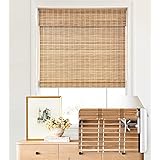Have you ever found yourself standing in your kitchen, perhaps stirring a pot or wiping down a counter, and suddenly thought, “There has to be a better way”? Or perhaps you’ve envisioned a space that feels more inviting, more efficient, or simply more ‘you’? For many homeowners, the kitchen isn’t just a place to prepare meals; it’s the epicenter of daily life, a hub for family gatherings, and a reflection of personal style. When it comes to transforming this vital space, exploring the latest modern kitchen designs and innovative kitchen remodeling ideas is paramount. The accompanying video offers a fantastic visual journey through 300 stunning concepts, and below, we delve deeper into the trends and practicalities that can bring your dream kitchen to life in 2025.
Embarking on a kitchen renovation can be a deeply rewarding experience, especially when armed with the right inspiration and insights. As highlighted in the video, the upcoming year is poised to redefine culinary spaces with a keen focus on sleek aesthetics, unparalleled functionality, and smart living solutions. Understanding these evolving trends is the initial step toward crafting a kitchen that not only meets your needs but also elevates your entire home environment.
Embracing the Future: Top Modern Kitchen Trends for 2025
The landscape of kitchen design is continually evolving, with 2025 setting the stage for significant shifts. Modern kitchen trends are characterized by a harmonious blend of form and function, often pushing boundaries while retaining a timeless appeal. These trends prioritize usability, aesthetic pleasure, and environmental consciousness.
Open Concept Kitchens: Fostering Connection
One of the most enduring and increasingly popular modern kitchen design elements is the open concept layout. This design philosophy advocates for the seamless integration of the kitchen with adjacent living or dining areas, effectively removing physical barriers. Consequently, this arrangement promotes greater interaction among family members and guests, making the kitchen a truly social space.
An open concept kitchen can also dramatically enhance the sense of spaciousness within a home, especially beneficial for properties with smaller footprints. For instance, a well-designed open plan might feature a large island that serves as both a food preparation area and a casual dining spot, effortlessly bridging the gap between cooking and communal activities. This fluidity in design ensures that the cook remains part of the conversation, rather than being isolated.
Bold Color Palettes: Injecting Personality
While the timeless elegance of neutral tones—whites, grays, and beiges—continues to hold its appeal, 2025 is witnessing a pronounced surge in bold color palettes for modern kitchen designs. Homeowners are increasingly adventurous, opting for statement colors that infuse personality and depth into their culinary spaces. For example, rich emerald green cabinetry can introduce a sense of luxury and connection to nature, while deep navy blue offers a sophisticated and calming ambiance. Terracotta hues, conversely, evoke warmth and an earthy, organic feel, adding a distinctive character that deviates from the conventional.
These vibrant choices are often balanced with natural materials or strategic use of neutrals to prevent the space from feeling overwhelmed. A striking feature wall or an island in a powerful hue can serve as an effective focal point, transforming a functional area into a visual masterpiece. This approach ensures a contemporary yet inviting atmosphere, allowing homeowners to express their unique style.
Mixed Materials: A Symphony of Textures
The artful combination of diverse materials is another defining characteristic of contemporary kitchen aesthetics. By integrating different textures and finishes, designers create visual interest and a custom, curated feel that distinguishes one space from another. Consider, for example, the sophisticated contrast achieved by pairing sleek natural wood cabinetry with industrial metallic accents, such as brushed brass handles or stainless steel appliances.
Furthermore, luxurious marble countertops can be beautifully complemented by matte cabinetry in a contrasting color, producing a striking interplay of polished and muted surfaces. This approach extends beyond major elements to encompass backsplashes, flooring, and even decorative accessories, allowing for a layered and highly personalized modern kitchen design. The careful selection of mixed materials not only adds depth but also imbues the kitchen with a sense of bespoke craftsmanship.
Sustainability as a Priority: Eco-Conscious Kitchens
As environmental awareness grows, sustainability is no longer merely a trend but a fundamental principle guiding modern kitchen design. Homeowners are increasingly prioritizing eco-friendly materials and energy-efficient appliances to minimize their environmental footprint. This commitment extends to using reclaimed wood for shelving or islands, which not only looks unique but also prevents deforestation. Additionally, recycled glass can be ingeniously incorporated into countertops or backsplashes, offering both aesthetic appeal and a practical second life for materials.
Moreover, the integration of energy-efficient appliances, such as induction cooktops and smart refrigerators with optimized energy consumption settings, significantly reduces household energy usage. Such choices contribute to a greener planet while also potentially lowering utility bills over time. Embracing sustainable practices within kitchen remodeling ideas reflects a conscious decision to invest in both personal well-being and global environmental health.
Smart Kitchen Technology: The Future is Now
The integration of cutting-edge technology is transforming kitchens into highly functional and intuitive spaces. These innovations are designed to streamline tasks, enhance convenience, and provide a futuristic touch to daily routines. Examples include touchless faucets, which offer improved hygiene and water conservation, and smart refrigerators capable of managing grocery lists, monitoring food freshness, and even displaying recipes.
Voice-controlled lighting and appliance systems further simplify kitchen operations, allowing users to adjust ambiance or start the dishwasher with a simple command. Furthermore, induction cooktops with precise temperature controls and integrated ventilation systems exemplify how technology can elevate both the safety and efficiency of cooking. These technological advancements collectively redefine the modern kitchen, making it more responsive to the demands of contemporary living.
Maximizing Small Kitchen Spaces: Ingenious Solutions
Designing a small kitchen presents unique challenges, yet it also offers creative opportunities to maximize every inch. The key to successful small kitchen remodeling lies in strategic planning and intelligent design choices that enhance both functionality and perceived spaciousness. Even the most compact areas can be transformed into stylish and highly efficient culinary zones.
Smart Storage Solutions: Going Vertical
In a small kitchen, vertical storage is an indispensable asset. Installing shelves or cabinetry that extends all the way to the ceiling effectively utilizes often-overlooked overhead space, providing ample room for rarely used items or bulk storage. This approach minimizes clutter on countertops and ensures a tidy, organized environment.
Furthermore, innovative storage solutions like pull-out pantries, corner drawers, and specialized drawer dividers can drastically improve accessibility and organization within limited footprints. These clever additions prevent items from getting lost in the back of cabinets, making everyday cooking a more streamlined experience. Every element, from spice racks to pot hangers, should be considered for its space-saving potential.
Compact Appliances & Multifunctional Furniture
Selecting appropriately sized appliances is crucial for small kitchen efficiency. Rather than standard-sized models, opting for compact alternatives such as a slim refrigerator, a two-burner induction stovetop, or an under-counter dishwasher can free up significant counter and floor space. These specialized appliances are engineered to deliver full functionality within a reduced footprint, ensuring no compromise on utility.
Multifunctional furniture also plays a pivotal role in optimizing small kitchens. For instance, a kitchen island designed with integrated storage underneath, or one that doubles as a dining table with retractable seating, offers exceptional versatility. Such pieces serve multiple purposes, thereby reducing the need for additional furniture and maintaining an open feel within the room. This thoughtful integration of form and function is paramount.
Color, Reflective Surfaces, and Lighting
The strategic use of color in small kitchens can profoundly influence the perception of space. Light, neutral tones like soft whites, pale grays, or subtle pastels are highly effective in creating an illusion of openness and making the room feel brighter. These colors reflect light, preventing the space from feeling cramped or enclosed. Consequently, the kitchen appears more expansive and airy.
Reflective surfaces further enhance this effect. Glossy cabinets, polished chrome fixtures, or mirrored backsplashes can bounce light around the room, making it appear larger and more luminous. Additionally, well-planned lighting is indispensable; under-cabinet lights illuminate task areas, while pendant lights can draw the eye upward, accentuating height. A brightly lit kitchen always feels more welcoming and significantly more spacious, making it a crucial element in any small kitchen remodeling project.
Navigating Kitchen Layouts: The Foundation of Design
The chosen kitchen layout forms the fundamental framework upon which all other design elements are built. It dictates workflow, efficiency, and the overall usability of the space. Selecting the appropriate layout is a critical decision that should align with your lifestyle, cooking habits, and available area.
The L-Shaped Layout: Versatility and Flow
The L-shaped kitchen layout, characterized by two adjacent walls of cabinetry and appliances, remains a highly versatile and popular choice. This configuration works exceptionally well in both modest and expansive spaces, providing ample counter space and an inherently open flow. It naturally accommodates the “work triangle” (sink, stove, refrigerator) concept, ensuring efficient movement between key zones.
Moreover, the L-shape is ideal for families or individuals who frequently cook, as it allows for multiple users without congestion. It also presents opportunities to incorporate a dining table or an island within the open area, further enhancing its social and functional appeal. This layout effectively balances practicality with an inviting atmosphere, suitable for various kitchen remodeling ideas.
The U-Shaped Kitchen: Maximizing Storage and Efficiency
For those prioritizing extensive storage and a highly efficient workspace, the U-shaped kitchen layout is an excellent option. This design envelops the cook with work surfaces and appliances on three contiguous walls, creating an incredibly organized and contained environment. It maximizes both countertop space and cabinet storage, making it particularly advantageous for larger homes or avid culinary enthusiasts.
However, careful planning is essential to ensure sufficient maneuverability within the U-shape, preventing the space from feeling too enclosed. Incorporating smart corner storage solutions, such as lazy Susans or pull-out systems, can further enhance its functionality. When executed thoughtfully, a U-shaped kitchen offers unparalleled efficiency and a sense of dedicated culinary domain.
Island Kitchens: The Modern Home’s Social Hub
Island kitchens have become a quintessential feature of modern homes, serving as a dynamic centerpiece that transcends its basic function. A well-designed kitchen island is incredibly versatile; it can be utilized for food preparation, casual dining, additional storage, or as a social hub during gatherings. This central element facilitates interaction, allowing guests to congregate without impeding the cook’s workflow.
Furthermore, islands offer extensive customization potential. They can be equipped with a secondary sink for prep work, a built-in stovetop, a wine fridge, or even integrated power outlets for small appliances. The addition of an island transforms a kitchen into a truly multifunctional space, embodying the essence of modern living and enhancing any kitchen remodeling endeavor.
Galley Kitchens: Compact Efficiency
When space is at a premium, the galley kitchen stands out as an incredibly efficient and practical layout. This design features two parallel workspaces or countertops, creating a narrow corridor. By keeping everything within easy reach, galley kitchens are highly efficient for single cooks or compact homes, minimizing steps and maximizing productivity during meal preparation.
While often associated with smaller areas, a thoughtfully designed galley kitchen can feel surprisingly open and functional. Employing light colors, reflective surfaces, and ample lighting can prevent it from feeling confined. Its inherent efficiency makes it an ideal solution for those seeking a highly streamlined cooking experience without sacrificing style in their modern kitchen designs.
The One-Wall Kitchen: Minimalist Elegance
The one-wall kitchen, frequently found in studio apartments or open-concept living spaces, embodies sleek, minimalist elegance. All major appliances and cabinetry are arranged along a single wall, making it an incredibly space-saving layout. This design works exceptionally well when seamlessly integrated with a dining or living area, maintaining an unobstructed flow throughout the main living space.
Despite its minimal footprint, a one-wall kitchen can feel luxurious with the right design elements. High-end materials, sophisticated finishes, and smart storage solutions can elevate its aesthetic and functionality. It represents a commitment to uncluttered living and provides a sophisticated backdrop for other home interior design elements.
Defining Elements: Cabinetry, Countertops, and Backsplashes
The choice of cabinetry, countertops, and backsplashes significantly dictates the aesthetic and functional appeal of any modern kitchen. These elements work in concert to establish the kitchen’s overall style, defining its character and usability.
Sleek Cabinetry: Form Meets Function
Modern kitchen designs are often characterized by flat panel or handleless cabinets, which are the hallmark of contemporary aesthetics. Their clean lines and minimalist design create a sleek, sophisticated, and uncluttered appearance. Handleless options, often featuring push-to-open mechanisms or integrated pulls, contribute to a seamless look that is both visually appealing and easy to maintain.
For a more dynamic approach, two-tone cabinetry is gaining traction. Combining colors such as crisp white uppers with rich navy blue lowers, or natural wood bases with gray top cabinets, adds visual interest without overwhelming the space. Glass-front cabinets are another excellent option, offering an opportunity to showcase cherished dishes or decorative items, thereby adding a personalized touch to your kitchen remodeling project.
Countertop Choices: Durability and Style
When selecting countertops, a balance between durability, maintenance, and aesthetic appeal is paramount. Quartz remains a top choice for modern kitchens due to its exceptional durability, low maintenance requirements, and vast array of colors and patterns. It offers a consistent look and is highly resistant to stains and scratches, making it ideal for busy households.
For those desiring a touch of opulence, marble countertops provide undeniable luxury and timeless beauty, though they require more diligent care due to their porous nature. Conversely, butcher block countertops introduce warmth and character, adding a natural, inviting element to the kitchen. Each material offers distinct benefits, allowing homeowners to select a surface that best suits their practical needs and design vision.
Backsplash Creativity: The Finishing Touch
The backsplash offers a prime opportunity to inject creativity and personality into your modern kitchen design. While classic subway tiles remain a timeless and versatile option, contemporary trends lean towards more expressive choices. Geometric patterns, for example, can add a modern twist and a sense of architectural interest, creating a focal point above the range or sink.
Textured tiles, whether ceramic, porcelain, or natural stone, can introduce tactile appeal and visual depth. For a truly seamless and sophisticated look, extending the countertop material up the wall as a full-height backsplash creates a cohesive and luxurious finish. The careful selection of backsplash material and design can significantly elevate the overall aesthetic, tying together all elements of your kitchen remodeling.
Hardware: Small Details, Big Impact
Finally, the often-overlooked details of kitchen hardware can significantly influence the overall feel of your cabinetry and drawers. Sleek, matte-finished handles in black, brushed nickel, or brass offer a refined, contemporary look that complements minimalist designs. Alternatively, push-to-open mechanisms for handleless cabinets provide an ultra-modern aesthetic, maintaining clean lines and a smooth surface.
These subtle yet impactful choices can elevate the entire kitchen, providing a cohesive and polished appearance. Thoughtful consideration of hardware ensures that every element, no matter how small, contributes to the overarching vision of a stylish and functional modern kitchen design.











